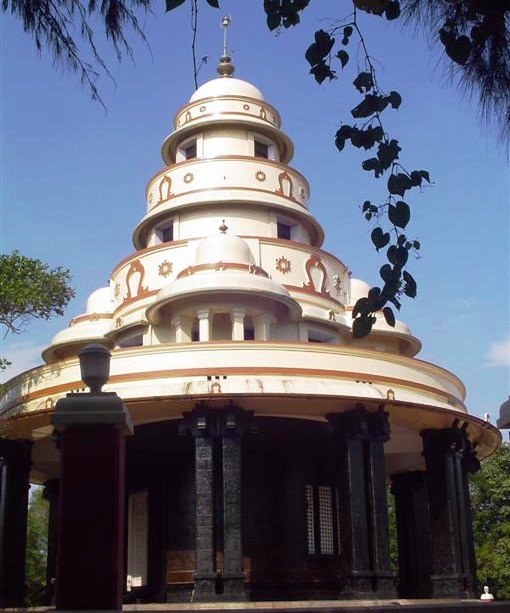A brief note on Narayana Guru – One of the greatest social reformers from Kerala
Now we proudly celebrate the intellectual world, with Kerala ranking high among the literacy and socially stable states across India. But if we move back, it was not the same a century back. Once Kerala was infamous for religious indifferences and discriminations based on caste and creed, and several superstitions also prevailed here, hard to believe. There was a great cultural difference, and difference based on caste and financial status then. Many great social reformers existed in Kerala in the 19th and 20th century who strived for the uplift of lower sectors of society, and from Vivekananda’s infamous remark about Kerala, this small place has moved very much forward, and now called, ‘God’s own country’.
Sree Narayana Guru, Ayyankali, Chattampi Swamikal, Dr. Pali, Pattom Thanupillai – the names of social reformers are many, on whom we Keralities feel proud of, what we are today. Through this column, I would like to give a brief sketch on Sree Narayana Guru, who played a magnificent role in the social reformation of the modern Kerala, and is known as the architect of modern Kerala.

Brief note of Narayana Guru’s early days
He was born on 1854 in Chempazhanti village of present Thiruvananthapuram district. Vayalvarathu Veedu is his ancestral home, and he was born to Madanasan and Kuttiyamma. Nanu was his pet name during childhood days. Since young, he witnessed the caste discriminations existed in the society and slowly started responding to it.
The mischievous child with the name Nanu
During his younger days, he used to conduct many mischiefs solely targeting the superstitions and social discriminations existed then. He used to touch untouchables and later touched members of his family before bathing, which irked them a lot. He used to consume fruits and snacks placed before the Lord before the worships are completed, urging that god will only be happy to see his activity.
Advaita Darshan of Narayana Guru
Narayana Guru got attracted to the Advaita principles of Sree Narayana Guru. In Ullala temple of Vaikkom, he installed a mirror instead of Hindu idols, which became an important chapter of social reformation of modern Kerala. He started Advaita Ashram in Aluva in 1913, with his own Advaita principles (existence of single God). In front of the Ashram gate, he wrote that there is no typical religion, caste or religious belief for the inhabitants of his ashram. In 1924, the first Asian Conference of All Religions was conducted there under his leadership. He also made his intentions clear, that the conference is not meant for debates or wins, but to share knowledge with others.
Important works of Gurudeva
He contributed more than 60 works, written in Malayalam and Sanskrit. Daivadasakam, Athmopadesa Satakam, Darshanamala, Advaita Deepika, Anukamba Dasakam, Karunya Panchakam, Kali Nadakam, Vinayakaashtam, Kundalinipatt, Pinda Nandi etc are among his literal contributions.
Porridge from the hut of Pulaya
He lived in an age when Ezhavas (the caste which he belonged to) were restricted to mingle with Pulaya community or go to their huts. Once he was going through the place, when he watched the overflow of porridge (kanji) during its preparation at the home premises of a Pulaya hut. He put the flame off and took the pot from hearth and returned from the place. His family members came to know about this matter and got angry. But innocent Nanu argued that, if he has not done it, the whole porridge would have spilt and whole family might have starved the whole day.
In front of divine guru
Once great Rabindranath Tagore visited Narayana Guru, and he remarked this way, “Since the moment I saw you, there was a change in my heart. I have never witnessed a guru before, who equals the status of Narayana Guru.”
The historic installation at Aruvipuram
Avarnar (lower caste people) were restricted from idol worship those days. Guru was not willing to beg before high caste people to grand them permission to worship at temples and before idols. Instead he decided to install a temple for avarnars and challenge upper caste people.
From Neyyar river of Aruvipuram (from ShankaranKuzhi Kayam) he took a bath and got a Siva idol from its depths. In presence of his disciplies, he installed it in a rock, on the bank of the river. Savarnas (higher caste people) came to know about this matter, and they reached the place as a group. Narayana Guru proclaimed that he installed Lord Siva belonging to Avarnars, and made them speechless. He also noted in a rock that, this place is for worship for people belonging to all caste groups irrespective of caste, communal and cultural indifferences, and also that it stands as a harmony for all groups of people. His historic event took place in 1888.
Milestones of Narayana Guru’s life

1854 – He was born on Chathayam star of Chingam month in Chempazhanti of Thiruvananthapuram
1877 – He completed his higher studies in Gurukula system of learning
1884 – His father passed away
1888 – Installation of Siva idol at Arivippuram
1891 – He met Kumaran Asan for the first time
1898 – He organized Aruvippuram Kshetra Yogam
1903 – He started SNDP
1912 – He installed Sarada Mandiram
1913 – He installed Advaita Ashram
1922 – He met Rabindranath Tagore
1924 – He organized the first Asian Conference of All Religions
1925 – His meeting with Mahatma Gandhi
1928 – Guru Samadhi















Recent Comments